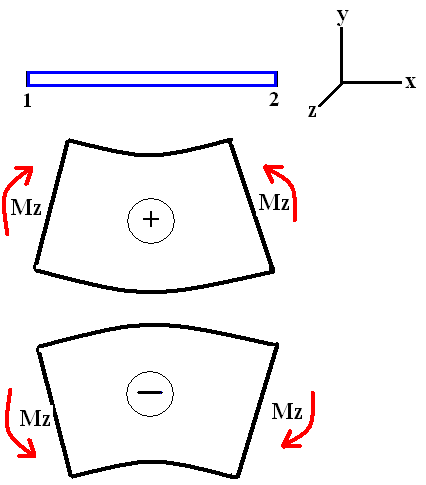In general, a bending moment is positive if it tends to bend a beam element section concave facing upward with respect to the local axis. This is shown in the figure below. A positive bending moment about the local z axis will put the upper surface of the beam (positive y) into compression and the lower surface into tension. Note that the local x axis for the element points from the first node to the second. In other words, a positive bending moment is one which causes sagging with respect to the local axis system.

Bending Moment Sign Convention
This convention may also be illustrated with a simple example. A model consisting of two elements is shown in the Cantilever Beam with Bending Moment and Shear Force Distributions figure, along with the local axis system. The system modelled (a simple cantilever structure) is restrained in all degrees of freedom at the bottom node (Node 1), and a force F is applied in the positive sense of the y axis at the top. Such a force will cause compression in the right hand side of the elements (positive y) and tension at the left hand side. This defines a positive bending moment about the local z axis.